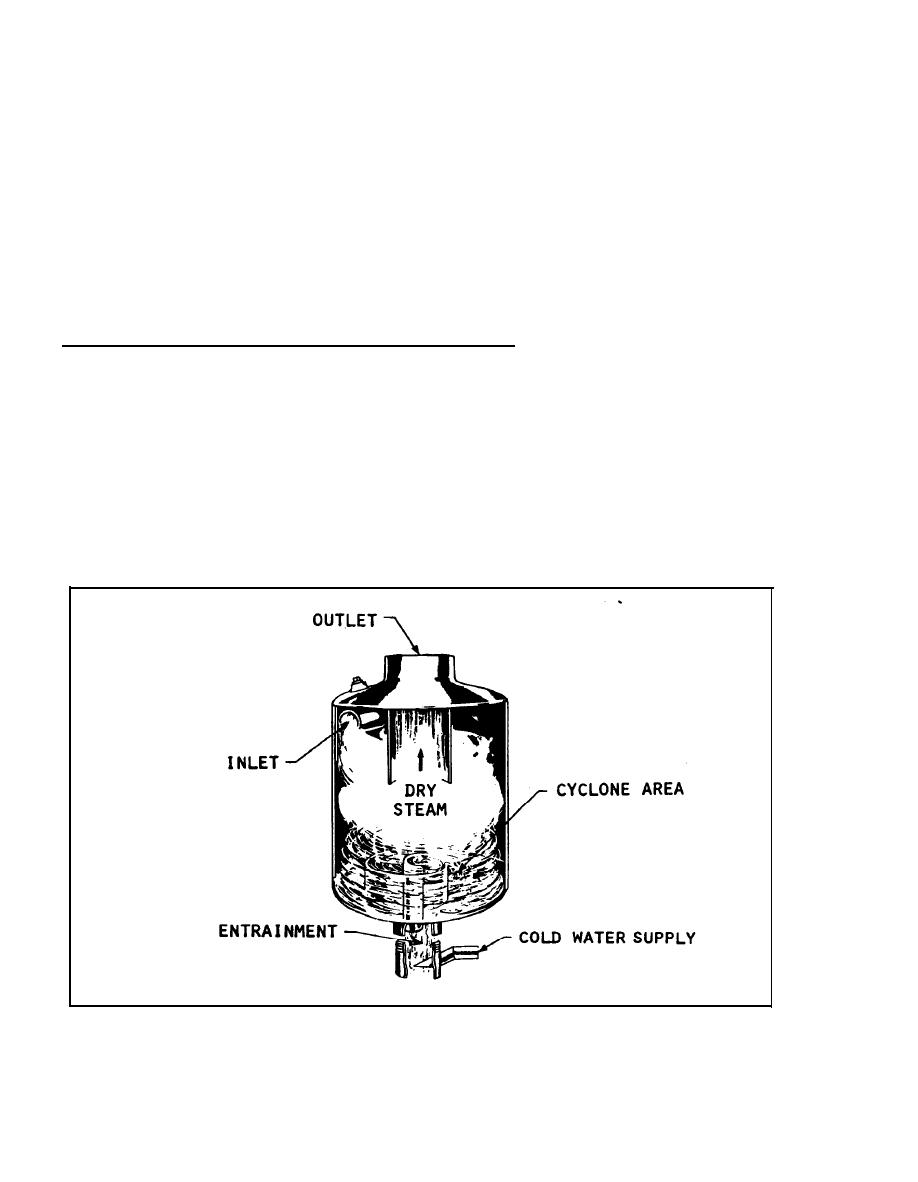

Custom Search
|
|

|
||
 MOISTURE SEPARATORS AND DRIP LEGS
Section 2.
1 MOISTURE SEPARATORS. Various types of blowdown and inline separators are
u s e d in distribution lines to separate entrained water, oil, and particles
from steam, compressed air, or gases. ( R e f e r to figures 8-12, 8-13, and
8 - 1 4 . ) All moisture separators use the principles of a vortex and centrifugal
force to separate the moisture from steam or gas. As steam enters a
s e p a r a t o r , the design of the inlet or stationary baffle vanes cause the steam
t o swirl in a cyclone-like vortex against the the walls of the vessel. The
i n c r e a s i n g velocity of the vortex causes centrifugal force to deposit the
m o i s t u r e on the walls of the vessel. The moisture then drops to the bottom of
t h e separator and is eliminated through a trap or directly into a drain line.
Once entrainment has been eliminated, clean, dry steam flows through the
center of the vortex to an outlet and back into the flow line. NAVFAC MO-206,
Operation and Maintenance of Air Compressor Plants, addresses the usage and
m a i n t e n a n c e of moisture separators.
2 DRIP LEGS. D r i p legs are provided to collect condensate from steam lines
and compressed air lines. The condensate is generally removed by traps,
a l t h o u g h manual drain valves are often used for compressed air lines. Drip
l e g s are usually located at low points, a t the bottom of all risers, and at
i n t e r v a l s of not over 200 feet for horizontally pitched pipes where traps are
accessible.
I n buried underground pipe installations, where the traps are
i n a c c e s s i b l e , drip legs are usually located at intervals of not over 350 feet.
Moisture Separators - Downdraft
FIGURE 8-12.
8-18
|
 |
|
 |
||